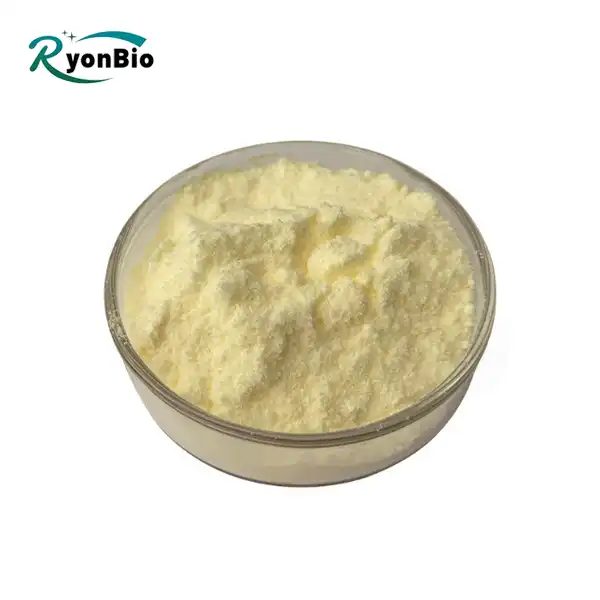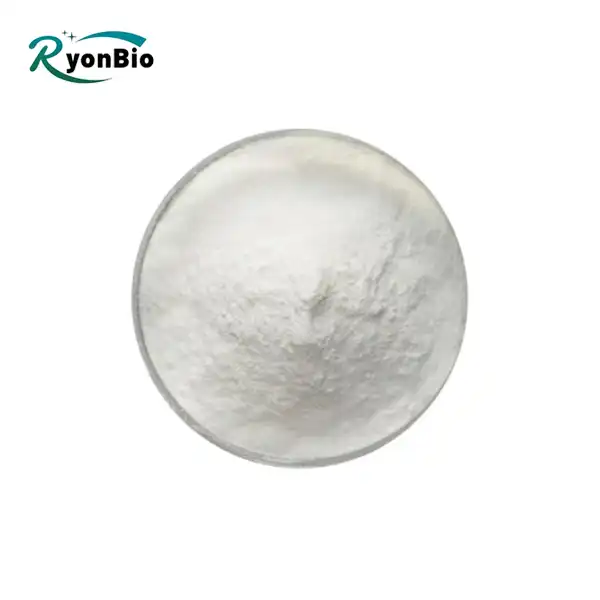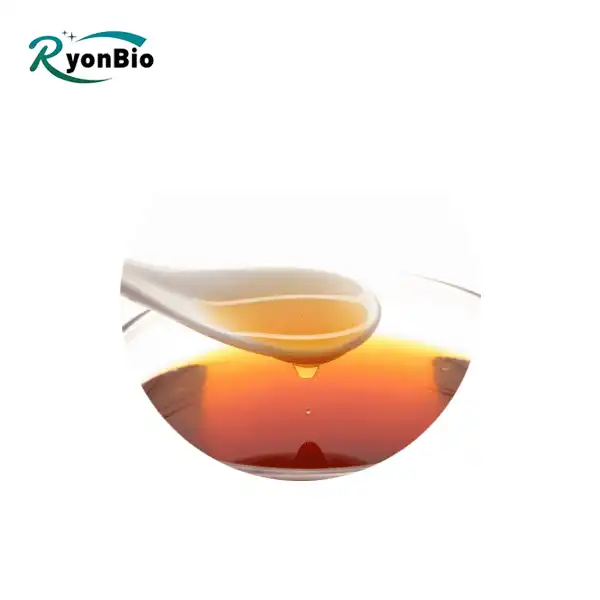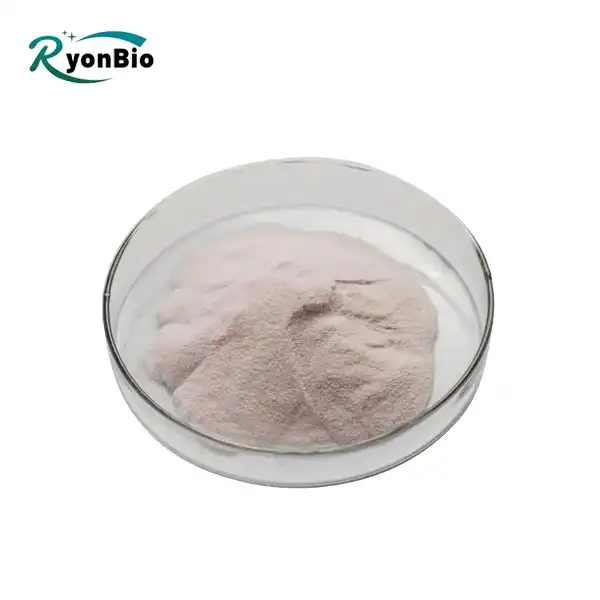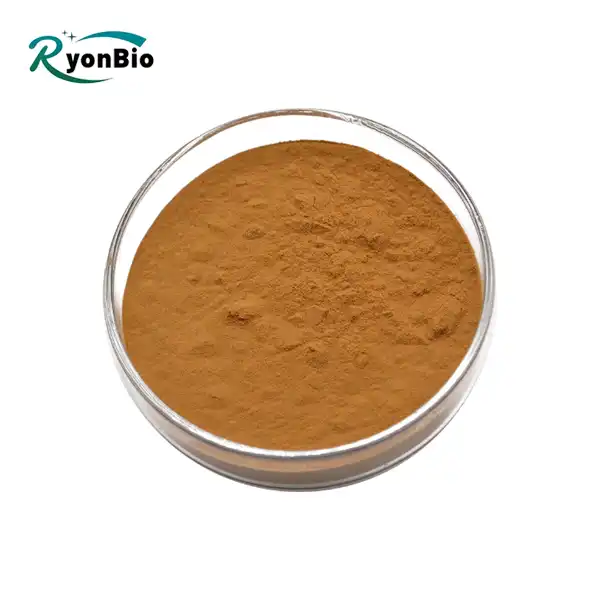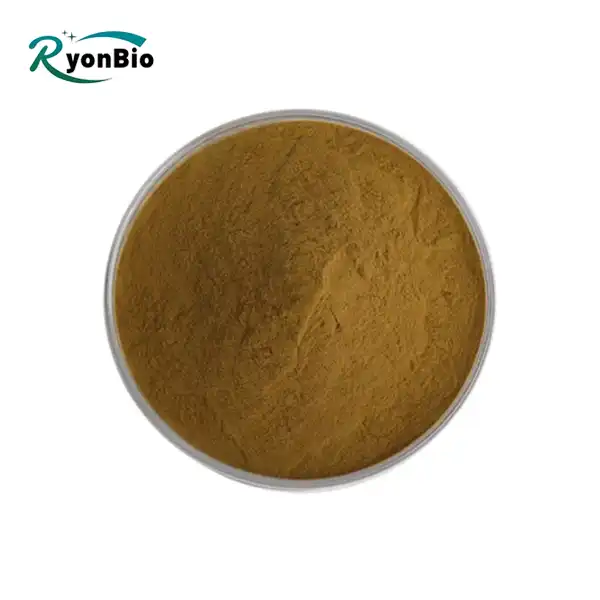What is the recommended dosage of Ellagic Acid Dihydrate Powder?
In the realm of dietary supplements, determining the appropriate dosage of compounds like Ellagic Acid Dihydrate Powder is crucial for optimizing health benefits while minimizing potential risks. This article aims to provide a comprehensive overview of the recommended dosage of it, drawing insights from reputable sources and expert recommendations. By synthesizing empirical evidence and addressing common queries, we offer practical guidance for individuals seeking to incorporate this compound into their wellness regimen.

Understanding Ellagic Acid Dihydrate Powder
Ellagic Acid Dihydrate Powder is a polyphenolic compound found in various fruits, nuts, and seeds, renowned for its antioxidant properties. Its potential health benefits have garnered attention in both scientific research and consumer interest. However, establishing the optimal dosage of it requires consideration of factors such as bioavailability, individual variability, and intended health outcomes.

Analyzing Expert Recommendations
Writing Survey: Conduct a intensive survey of distributed investigate considers and clinical trials examining the impacts of ellagic corrosive dihydrate. See for thinks about that particularly specify dose levels and any watched wellbeing results or side effects.
Guidelines from Wellbeing Organizations: Check if any wellbeing organizations or administrative bodies have issued rules or suggestions with respect to the utilize of ellagic corrosive dihydrate supplements. Organizations such as the National Organizing of Wellbeing (NIH) or the Nourishment and Medicate Organization (FDA) may give important insights.
Consultation with Healthcare Experts: Look for input from healthcare experts such as specialists, drug specialists, or enlisted dietitians who are learned around dietary supplements and their potential benefits and dangers. They can give personalized exhortation based on your person wellbeing needs and circumstances.
Expert Surveys and Conclusions: See for audits or conclusions from specialists in the field of nourishment, pharmacology, or integrator medication. Specialists who have conducted inquire about or have clinical encounter with ellagic corrosive dihydrate may offer important bits of knowledge into measurement proposals and ideal usage.
Consensus among Specialists: Assess whether there is a agreement among specialists with respect to the suggested dose run for ellagic corrosive dihydrate. Consistency in proposals over different trustworthy sources can loan validity to the proposed dosing rules.

Exploring Varied Dosage Forms
Powder: Ellagic acid dihydrate powder is a versatile form that can be easily mixed into liquids or food. It offers flexibility in dosage adjustment, allowing individuals to tailor their intake according to their preferences and needs. However, the taste and solubility of the powder may vary depending on the quality and source of the product.
Capsules or Tablets: Encapsulated or tablet forms of ellagic acid dihydrate provide convenient dosing and standardized amounts per serving. This form may be preferred by individuals who dislike the taste or texture of powders. Capsules and tablets often have controlled release formulations, which can influence the absorption and bioavailability of the compound.
Liquid Extracts: Liquid extracts of ellagic acid dihydrate are concentrated formulations that may offer enhanced bioavailability compared to other dosage forms. They are typically consumed in small doses and can be mixed with water or other beverages for easier consumption. However, the potency of liquid extracts can vary, so it's essential to follow dosage recommendations provided by the manufacturer.
|
|
|
Considering Individual Factors
Age: Age can affect metabolism, nutrient absorption, and overall health status. Children, adolescents, adults, and older adults may have different dosage requirements based on their physiological needs and potential health concerns. Pediatric dosages should be carefully adjusted to ensure safety and efficacy.
Weight: Body weight is a key factor in determining dosage for many supplements, including ellagic acid dihydrate. Higher body weight may require higher dosages to achieve desired therapeutic effects, while lower body weight may necessitate lower dosages to avoid potential overdosing.
Health Status: Individuals with certain health conditions or medical concerns may require tailored dosage adjustments. For example, individuals with liver or kidney impairment may have reduced metabolic function and may need lower dosages to prevent accumulation and potential toxicity. Conversely, individuals with specific health conditions may benefit from higher dosages under medical supervision.
Medications: Certain medications may interact with ellagic acid dihydrate or affect its absorption, metabolism, or elimination from the body. It's essential to consider potential drug-supplement interactions and consult with a healthcare provider before starting supplementation, especially if you are taking medications for chronic conditions.
Dietary Habits: Dietary habits, including nutrient intake and meal timing, can influence the absorption and effectiveness of ellagic acid dihydrate. Consuming the supplement with meals containing fat may enhance absorption, while certain dietary components or medications may interfere with absorption or utilization of the compound.
|
|
|
Reviewing Clinical Evidence
Literature Search: Start by conducting a comprehensive search of peer-reviewed scientific literature using databases like PubMed, Google Scholar, or specialized journals in pharmacology, nutrition, or medicine. Look for clinical trials, systematic reviews, and meta-analyses that investigate the effects of ellagic acid dihydrate supplementation.
Study Design: Evaluate the study designs, including randomized controlled trials (RCTs), observational studies, or animal studies. RCTs are considered the gold standard for assessing the efficacy and safety of interventions, including dosage regimens. Pay attention to factors like sample size, study duration, and blinding methods.
Dosage Levels: Identify the dosage levels of ellagic acid dihydrate used in the studies and their corresponding effects on health outcomes. Note any dose-response relationships or threshold effects observed in the literature. Dosage ranges may vary widely across studies, so look for patterns or consensus among multiple studies.
Outcome Measures: Assess the outcome measures used in the studies to evaluate the efficacy and safety of Ellagic Acid Dihydrate Powder supplementation. Common outcomes may include antioxidant activity, inflammatory markers, biomarkers of disease risk, or clinical endpoints related to specific health conditions.
Navigating User Queries
Users contemplating Ellagic Acid Dihydrate Powder supplementation often have queries regarding dosage, safety, and efficacy. Addressing these queries requires a balanced approach that considers scientific evidence, expert opinions, and user experiences. By providing transparent information and evidence-based insights, we empower users to make informed decisions about the dosage and usage of it in their wellness regimen.
Conclusion
In conclusion, determining the recommended dosage of Ellagic Acid Dihydrate Powder involves consideration of multiple factors, including expert recommendations, dosage forms, individual variability, and clinical evidence. By synthesizing insights from reputable sources and addressing common queries, we've endeavored to provide a comprehensive guide for individuals seeking to optimize their health through it. Moving forward, continued research and collaboration are essential to refine dosage recommendations and maximize the potential benefits of this promising compound.If you want to learn more about it, welcome to contact us:kiyo@xarbkj.com.
References:
National Institutes of Health - Office of Dietary Supplements. (https://ods.od.nih.gov/)
Journal of Agricultural and Food Chemistry. (https://pubs.acs.org/journal/jafcau)
Mayo Clinic. (https://www.mayoclinic.org/)
PubMed. (https://pubmed.ncbi.nlm.nih.gov/)
WebMD. (https://www.webmd.com/)




